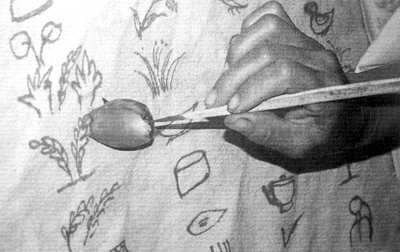 |
|
[Photo/people.com.cn] |
After the finding of the Poya Song Book was reported, a swarm of scholars came to Nong’s home to study it. They concluded that the 81 picture-like icons, with fixed configurations, pronunciations, and rich connotations, are rudimentary written characters. In addition to the more widely used antique block-shaped Zhuang writing, these ancient pictographic characters present another opportunity for people today to learn about the history of Zhuang culture. They are consequently of inestimable value in research on Zhuang culture and the history of written languages.
Some linguists argue that the Poya Song Book icons transcend the conventional definition and function of written language by encapsulating an entire song, its words and music, into one written symbol. This constitutes further evidence of the richness and diversity of human cultures.
Nong inherited the song book from her grandmother. But nobody knows when such books first came into being. All the materials used to make it were home grown. The ink is the crimson juice of cactus fruits, the pen is a stick cut out of bamboo, and the song sheet is of hand-woven cloth.
Scholars are debating whether or not the icons in the book are, as they appear to be, love song codes, or indicate something more complex and elusive. The jury is still out on that score.